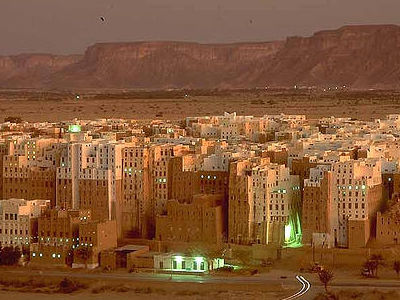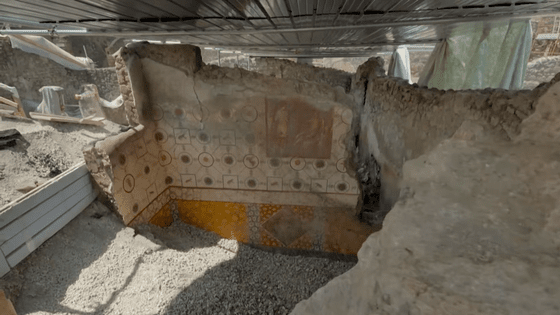Massive fresco discovered in Pompeii depicting 'secret Dionysian cult'

A huge fresco depicting a mysterious cult worshiping
POMPEII, DISCOVERY OF A ROOM WITH FRESCOES DEPICTING THE INITIATION INTO THE MYSTERIES AND THE DIONYSIAC PROCESSION - Pompeii Sites
https://pompeiisites.org/en/comunicati/pompeii-discovery-of-a-room-with-frescoes-depicting-the-initiation-into-the-mysteries-and-the-dionysiac-procession/
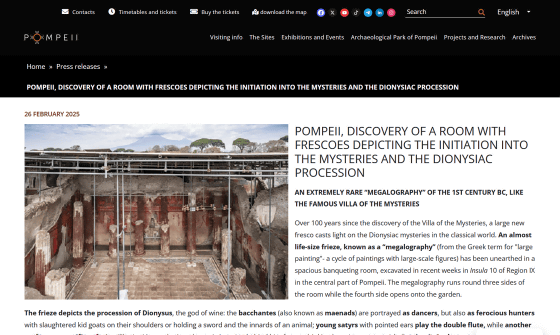
Rare fresco discovered in Pompeii shows type of woman who 'breaks free from male order to dance freely, go hunting and eat raw meat in the mountains' | Live Science
https://www.livescience.com/archaeology/romans/rare-fresco-discovered-in-pompeii-shows-type-of-woman-who-breaks-free-from-male-order-to-dance-freely-go-hunting-and-eat-raw-meat-in-the-mountains
Pompeii is an ancient Roman city that was engulfed in its entirety by the great eruption of Mount Vesuvius in 79 AD, and was instantly buried by pyroclastic flows, leaving the city exactly as it was at the time. On February 26, 2025, the Pompeii Archaeological Park, which manages the ruins of Pompeii, reported that excavations conducted over the past few weeks had uncovered a room with 'frescoes depicting a cult worshipping Dionysus.'
Since Dionysus was the god of wine and intoxication, cults worshipping Dionysus used addictive substances such as wine and opium to induce a trance state in their followers, and there was also a belief in the ' Dionysian Mysteries .' Because the Dionysian mysteries had a secretive aspect, there are not many documents remaining to this day, but a series of murals that tell the story of the Dionysian mysteries were found in a building called the Villa of the Mysteries , discovered in Pompeii in 1909.
The building where the Dionysian Mysteries frescoes were found has been named ' Casa del Tiaso' by the Pompeii Archaeological Park. The frescoes were painted on three walls surrounding a large banquet hall, with the remaining side opening onto a courtyard.
In the photo below, you can see that the frescoes are painted on the three walls surrounding the banquet hall.
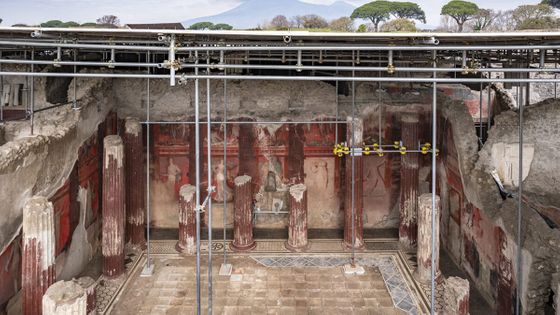
The frescoes depict a variety of animals, both dead and alive, as well as female figures of Bacchantes (Maenads), priestesses of Dionysus.
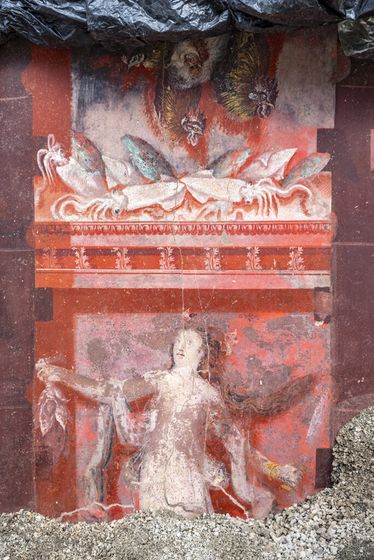
Some Bacchantes are depicted as hunters, carrying the carcass of a slaughtered goat on their shoulders and carrying swords.
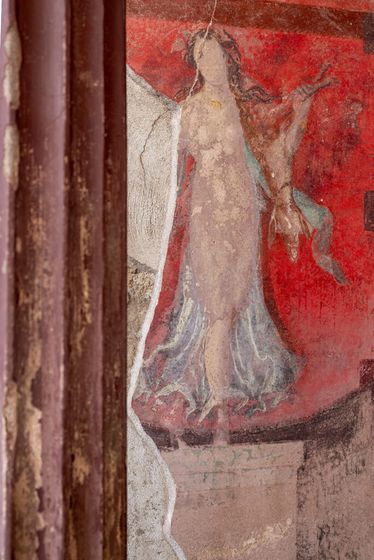
A series of murals suggests that the Dionysian mysteries were linked to images of wild animals and the hunt.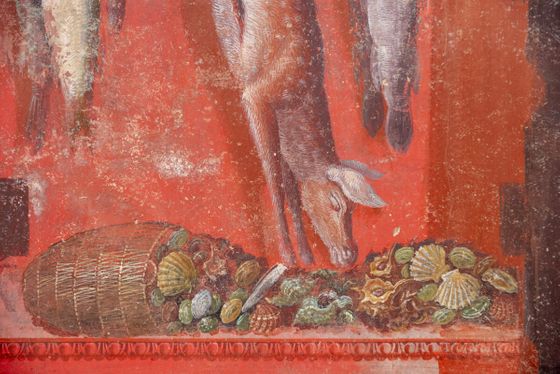
There was also a mural depicting a woman, presumably about to be initiated into the Dionysian mysteries, and an old
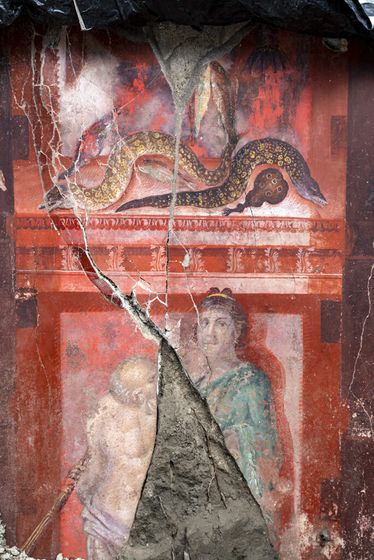
'To the ancients, the Bacchantes, or Maenads, represented the wild, untamed side of women, women who abandoned their children, their homes and even their towns, free from the dictates of men, and who went out to dance and hunt in the mountains and forests, eating raw meat,' said Gabriel Zuchtriegel, director of the Archaeological Park of Pompeii.
'In 100 years' time, today's discovery will be seen as a historic event,' Italian Culture Minister Alessandro Giuli said. 'It is an extraordinary historical document which, together with the frescoes of the Villa of the Mysteries, makes Pompeii special, revealing a little-known side of Mediterranean life in the Classical period.'
The newly discovered frescoes will soon be open to the public as part of a tour of the excavations at Pompeii Archaeological Park.
Related Posts:
in Note, Posted by log1h_ik





